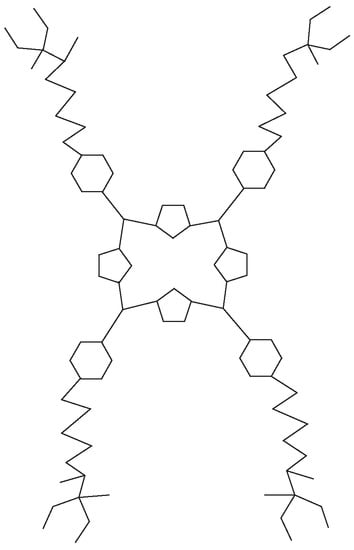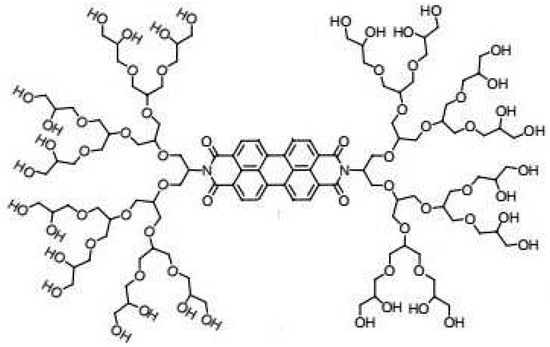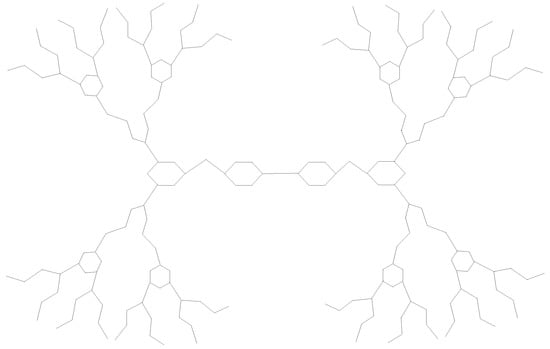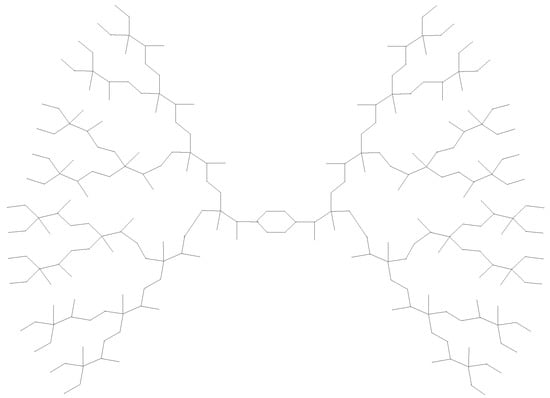Abstract
A graph is said to be a regular graph if all its vertices have the same degree, otherwise, it is irregular. Irregularity indices are usually used for quantitative characterization of the topological structure of non-regular graphs. In numerous applications and problems in material engineering and chemistry, it is useful to be aware that how irregular a molecular structure is? Furthermore, evaluations of the irregularity of underline molecular graphs could be valuable for QSAR/QSPR studies, and for the expressive determines of chemical and physical properties, such as enthalpy of vaporization, toxicity, resistance, Entropy, melting and boiling points. In this paper, we think over the following four irregularity measures: the irregularity index by Albertson, irregularity index, the total irregularity index and the variance of vertex degrees. By way of graph structural estimation and derivations, we determine these irregularity measures of the molecular graphs of different classes of dendrimers.
1. Introduction
Nanotechnology is a modern and fast-growing field that requires the design, production, and exploitation of structures at the nanoscale. A nano-object with all three external dimensions in the nanoscale is specified as a nanoparticle. One of the most brilliant applications of nanotechnology is in the discipline of medicine [1]. Nanomedicine performs a significant role in drug delivery, cancer treatment, and so on. Dendrimers are nano-sized, radially symmetric molecules with the very well homogeneous and monodisperse structure containing tree-like arms [2,3,4,5]. Dendrimers are recognised by unusual properties like small size, high functionality, cavities, well-defined three-dimensional structure, and globular shape. These properties make them rare candidates for using in nanotechnology and diverse biomedical applications [6,7]. Dendrimer structures are shaped with a fundamental atom or group of atoms named as the core, from this central structure, branches of other atoms called “dendrons” raise through various chemical reactions [4]. Dendrimers show significantly magnified physical and chemical properties compared to usual linear polymers. At present time, dendrimers are inviting the interest of a great number of scientists because of their wide range of talented applications in various fields such as material, nanoscience, biology, medicine, physics [8,9,10,11,12,13,14,15].
In theoretical chemistry and biology, topological indices have been used for working out the information on molecules in the form of numerical coding. This relates to characterizing physico-chemical, biological, toxicologic, pharmacologic, and other properties of chemical compounds by taking advantage of molecular indices. Thousands of molecular structure descriptors have been suggested in order to characterize the physical and chemical properties of molecules. Those indices can be separated into various classes, specifically degree-based indices, distance-based indices, eigenvalue-based indices, and mixed indices. Degree-based indices can be further classified in the class of irregularity indices that measure the irregularity of the given graph. Recently, Rti et al. [16] showed that the graph irregularity indices are efficient in quantitative structure property relationships (QSPR) studies of molecular graphs.
Throughout this article, all graphs are finite, undirected and simple. Let be such a graph with vertex set and edge set . The order of G is the cardinality of its vertex set and size is the cardinality of its edge set. The vertices of G corresponds to atoms, and an edge between two vertices is related to the chemical bond between these vertices. The degree of a vertex u of a graph G is symbolized by , and is defined as the number of edges incident with A graph is said to be regular, if all its vertices have the same degree, otherwise it is irregular. A sequence of non-negative integers is called a degree sequence, if there exists a graph G with such as . By , we denote the number of vertices of degree j for The imbalance of an edge is defined as In [17], Albertson initiated the term “irregularity of a graph G” using the imbalance parameter as follows:
It is easy to see that a graph G has irregularity zero if, and only if, it is a regular graph. Albertson [17] showed that the irregularity of any graph is an even number. Furthermore, he proposed upper bounds on the irregularity of bipartite, triangle-free graphs, and for trees. The relations between irregularity and the matching number of trees and unicyclic graphs were examined in [18]. Hansen et al. [19] characterized the graphs with maximal irregularity. Abdo and Dimitrov [20] worked out for the irregularity of graphs under several graph operations. This graph invariant is also known as the third Zagreb index. Recently, Abdo et al. [21] introduced the new term “total irregularity measure of a graph G,” which was denoted and detailed as follows:
Dimitrov and krekovski have introduced the relation between the irregularity and total irregularity of graphs in [22]. The characterization of the graphs with extremal values of irregularity has been given by Tavakoli et al. in [23]. The smallest graphs with equal irregularity measures are explored in [24]. Fath-Tabar [25] set up some new bounds on the Zagreb indices using the irregularity of graphs. Furthermore, Nasiri et al. [26,27], determined the second minimum of the irregularity and total irregularity indices in all graphs. Some new spectral bounds for graph irregularity have been given in [28]. For the detail discussions about these graph invariants, we refer [29,30,31,32,33,34,35]. Recently, Gutman et al. [36] introduced the irregularity index of a graph G, which is described as
number of elements in G consisting of members and edge set containing Some properties of this index have been presented in [37,38,39]. If the vertex set and edge set of G contains and elements, then the variance of G is denoted by and is defined as [30]:
Although a lot of work has been executed on the degree and distance-based indices of chemical molecular graphs, the analyses of irregularity-related indices for chemical structures are still largely limited. In [40,41,42], the irregularity indices of various chemical structures were examined. In this paper, we work out for the irregularity indices of the molecular graphs of distinct types of dendrimers.
2. Methodology
In this article, the schemes we used in our assessments are edge partition procedure, combinatorial registering, vertex partition technique, and degree-counting of vertices. Furthermore, we use Maple for calculations and Chemsketch for sketching the Figures.
Partition is an important topic in graph theory, and it also plays as a critical trick in many other graph problems in various settings. For example, labelling is a classical vertex partition problem which assigns all the vertices in graph a positive integer according to specific requirements, and it regard as a useful tool which widely applied in computer networks. Another example, harmonic coloring of graph is defined to color vertices with different colors satisfying: (1) two adjacent vertices have different colors; (2) the pair of colors for all edges in graph are different. That is to say, if , , , then . Therefore, the essence of harmonic coloring is an edge partition technique.
In our paper, we need to compute the irregularity measures of some specific dendrimers, and we need to divide the edge set into several classes in terms of the pair of degrees of two vertices of each edge. In each class, have the same value. This trick will be applied in computing , and . On the other hand, when it comes to , vertex partition approach is used in this article in which the whole vertex set is divided into several subsets according to their degrees in graph. Since the topological indices considered here are degree-based, the partition principles are degree-based designed as well.
3. Results and Discussion
In this section, we will compute the irregularity indices of several classes of dendrimers.
3.1. Phosphorus-Containing Dendrimers
Badetti et al. [43] synthesized five novel generations of phosphorus dendrimers based on a cyclotriphosphazene core with stable TEMPO radicals end groups. These dendrimers have been functionalized with pendant nitroxyl radicals, and these radicals show a strong magnetic exchange interaction. Some topological aspects of this dendrimer are discussed in [44]. Let be the molecular graph of this dendrimers, where n represents the generation stage of The chemical structure of is shown in Figure 1.

Figure 1.
with n = 3.
Theorem 1.
For the molecular graph , the irregularity indices are given by
Proof.
The order and size of are and respectively. Let be the set of vertices of degree i in We can classify the vertices of into four partite sets; the orders of these sets are:
, and
Now, let be the set of edges that have end vertices of degrees j and There are six types of edges in based on the degrees of end vertices of each edge. The cardinalities of these partite sets are:
, , and
Followed by the above information, and the expressions of irregularity indices manifested in Equations (1)–(4), the explicit formulae of these indices can be formulated as follows:
By means of simple calculations, we derive that
□
3.2. Porphyrin-Cored Dendrimer
Vestberg et al. [45] specified the characterization and synthesis of Porphyrin-cored 2,2-bis(methylol) Propionic acid dendrimers. Some distance-based topological indices of this dendrimer have been computed in [46]. Let be the molecular graph of this dendrimers, where n represents the generation stage of Figure 2 illustrates the molecular graph of

Figure 2.
with n = 1.
Theorem 2.
For the molecular graph , the irregularity indices are given by
Proof.
The order and size of are and respectively. Let be the set of vertices of degree i in There are four kinds of vertices in based on the degrees, the cardinalities of these sets are:
, and
Now, let be the set of edges that have end vertices of degrees j and There are eight types of edges in based on the degrees of end vertices of each edge. The orders of these partite sets are:
, , and
Now, with the help of vertex and edge partitions and Equations (1)–(4), the irregularity indices can be computed in the following manner:
After merging the similar items in the above equation, we have
□
3.3. PDI-Cored Dendrimers
The water-soluble PDI-cored dendrimers have got numerous conveniences, containing low cytotoxicity, strong red fluorescence, high quantum yield, excellent photostability, and versatile surface modification. These dendrimers have vast biological applications, including gene delivery, fluorescence live-cell imaging and labelling [47]. Recently, various topological indices of water-soluble PDI-cored dendrimers have been computed in [48,49,50]. Here, we compute irregularity indices for a class of PDI-cored PG dendrimers. Let be the molecular graph of PDI-cored PG dendrimers, where n represents the generation stage of The chemical structure of PDI-cored dendrimer is shown in Figure 3.

Figure 3.
with n = 3.
Theorem 3.
For the molecular graph , the irregularity indices are given by
Proof.
The order and size of are and respectively. Let be the set of vertices of degree i in The vertex set can be partitioned into three sets, the cardinalities of these sets are:
and
Now, let be the set of edges that have end vertices of degrees j and There are five types of edges in based on the degrees of end vertices of each edge. The cardinalities of these partite sets are:
, , , and
Now, using the above information in Equations (1)–(4), the values of irregularity indices can be determined as follows:
In the light of some calculations, we get
□
3.4. Triazine-Based Dendrimer
Gajjar et al. [51] developed a triazine-based system. This dendrimer was synthesized by divergent method evading protection/deprotection or functional group interconversion. Cytotoxicity and hemolytic analyses have revealed that these dendrimers were less toxic and can be further studied as drug carriers in the future. Let be the molecular graph of triazine-based dendrimers, where n represents the generation stage of The molecular graph of is displayed in Figure 4.

Figure 4.
with n = 2.
Theorem 4.
For the molecular graph , the irregularity indices are given by
Proof.
The order and size of are and respectively. Let be the set of vertices of degree i in There are three types of vertices in based on the degrees, the cardinalities of these sets are:
and
Now, let be the set of edges that have end vertices of degrees j and There are five types of edges in based on the degrees of end vertices of each edge. The cardinalities of these partite sets are:
, , and
Now, with the help of the above information and Equations (1)–(4), the irregularity indices can be written as follows:
After several calculational steps, we conclude that
□
3.5. Aliphatic Polyamide Dendrimers
Recently, Jishkariani et al. [52] prepared aliphatic polyamide dendrimers containing ethylenediamine, piperazine, and methyl 2,2-bis(aminomethyl)propionate cores. They show that these dendrimers are enzymatically and hydrolytically stable and also exhibit antimicrobial activity. Thus, these are interesting candidates for biomedical applications. Let be the molecular graph of polyamide dendrimers containing piperazine as a core, where n represents the generation stage of The molecular graph of is presented in Figure 5.

Figure 5.
with n = 4.
Theorem 5.
For the molecular graph , the irregularity indices are given by
Proof.
The order and size of is Let be the set of vertices of degree i in There are four types of vertices based on the degrees in , the cardinalities of these sets are:
, and
Now, let be the set of edges that have end vertices of degrees j and There are eight types of edges in based on the degrees of end vertices of each edge. The cardinalities of these partite sets are:
, , and
Now, using the above information in the definitions of irregularity indices, which are formulated in Equations (1)–(4), we compute these indices in the following way:
After some simplifications, we deduce that
□
4. Conclusions
A modern trend in QSAR/QSPR studies is the use of properties, which can be fixed from structure deprived of the input of any other data. The basic justification for this is to predict the chemical properties of such a large number of compounds and drugs takes a large number of chemical examinations, thereby these jobs build up the workload of the chemical and pharmaceutical researchers. In this regard, the procedure of reckoning the different types of topological indices has presented the clarifications of such medicinal behaviour of several compounds and drugs. Hence, the irregularity indices for the molecular graphs of various types of dendrimers are illustrated by graph structure analysis and a mathematical derivation method in this article. The values of the computed irregularity indices against the different generation stages of dendrimers are shown in the Table 1.

Table 1.
The values of irregularity indices of dendrimers structures against first and second generation stages.
Author Contributions
All the author contributed equally.
Funding
This work was supported in part by the National Natural Science Foundation of China (no. 11761083).
Conflicts of Interest
The authors declare no conflict of interest.
References
- Freitas, R. Nanomedicine 2. 2000. Available online: http://www. foresight.org/Nanomedicine (accessed on 18 January 2019).
- Tomalia, D.A.; Naylor, A.M.; Goddard, W.A., III. Starburst dendrimers: Molecular-level control of size, shape, surface chemistry, topology, and flexibility from atoms to macroscopic matter. Angew. Chem. Int. Ed. Engl. 1990, 29, 138–175. [Google Scholar] [CrossRef]
- Tomalia, D.A.; Christensen, J.B.; Boas, U. Dendrimers, Dendrons and Dendritic Polymers: Discovery, Applications, the Future; Cambridge University Press: New York, NY, USA, 2012. [Google Scholar]
- Dufes, C.; Uchegbu, I.F.; Schatzlein, A.G. Dendrimers in gene delivery. Adv. Drug Deliv. Rev. 2005, 57, 2177–2202. [Google Scholar] [CrossRef] [PubMed]
- Sampathkumar, S.G.; Yarema, K.J. Dendrimers in cancer treatment and diagnosis. In Nanomaterials for Cancer Diagnosis; Wiley-VCH: Weinheim, Germany, 2007; Volume 7. [Google Scholar]
- Frechet, J.M. Functional polymers and dendrimers: Reactivity, molecular architecture, and interfacial energy. Science 1994, 263, 1710–1715. [Google Scholar] [CrossRef]
- Klajnert, B. Dendrimers in biomedical applications. Curr. Med. Chem. 2012, 19, 4895. [Google Scholar]
- Amreddy, N.; Babu, A.; Panneerselvam, J.; Srivastava, A.; Muralidharan, R.; Chen, A.; Zhao, Y.D.; Munshi, A.; Ramesh, R. Chemo-biologic combinatorial drug delivery using folate receptor-targeted dendrimer nanoparticles for lung cancer treatment. Nanomed-Nanotechnol. 2018, 14, 373–384. [Google Scholar] [CrossRef]
- Babamiri, B.; Salimi, A.; Hallaj, R. Switchable electrochemiluminescence aptasensor coupled with resonance energy transfer for selective attomolar detection of Hg2+ via CdTe@CdS/dendrimer probe and Au nanoparticle quencher. Biosens. Bioelectron. 2018, 102, 328–335. [Google Scholar] [CrossRef] [PubMed]
- Blanckenberg, A.; Kotze, G.; Swarts, A.J.; Malgas-Enus, R. Effect of nanoparticle metal composition: Mono and bimetallic gold/copper dendrimer stabilized nanoparticles as solvent-free styrene oxidation catalysts. J. Nanopart. Res. 2018, 20, 44. [Google Scholar] [CrossRef]
- Jamshidi, A.; Maleki, B.; Zonoz, F.M.; Tayebee, R. HPA-dendrimer functionalized magnetic nanoparticles (Fe3O4@D-NH2-HPA) as a novel inorganic-organic hybrid and recyclable catalyst for the one-pot synthesis of highly substituted pyran derivatives. Mater. Chem. Phys. 2018, 209, 46–59. [Google Scholar] [CrossRef]
- Kambe, T.; Imaoka, T.; Yamamoto, K. Insight into the effect of dendrimer structure on photoluminescence from assembled bismuth complexes. J. Inorg. Organomet. Polym. 2018, 28, 463–466. [Google Scholar] [CrossRef]
- Kesharwani, P.; Gothwal, A.; Iyer, A.K.; Jain, K.; Chourasia, M.K.; Gupta, U. Dendrimer nanohybrid carrier systems: An expanding horizon for targeted drug and gene delivery. Drug Discov. Today 2018, 23, 300–314. [Google Scholar] [CrossRef]
- Kurczewska, J.; Ceglowski, M.; Messyasz, B.; Schroeder, G. Dendrimer-functionalized halloysite nanotubes for effective drug delivery. Appl. Clay Sci. 2018, 153, 134–143. [Google Scholar] [CrossRef]
- Suresh, R.; Singh, C.; Rewar, P. Dendrimers as carriers and its application in therapy. Int. J. Anal. Pharm. Biomed. Sci. 2015, 4, 15–23. [Google Scholar]
- Réti, T.; Sharafdini, R.; Dregelyi-Kiss, A.; Haghbin, H. Graph irregularity indices used as molecular descriptor in QSPR studies. Match Commun. Math. Comput. Chem. 2018, 79, 509–524. [Google Scholar]
- Albertson, M.O. The irregularity of a graph. Ars Comb. 1997, 46, 219–225. [Google Scholar]
- Luo, W.; Zhou, B. On the irregularity of trees, unicyclic graphs with given matching number. Util. Math. 2010, 83, 141–147. [Google Scholar]
- Hansen, P.; Mélot, H. Variable neighborhood search for extremal graphs. 9. bounding the irregularity of a graph. Discret. Math. Theor. Comput. Sci. 2005, 69, 253–264. [Google Scholar]
- Abdo, H.; Dimitrov, D. The irregularity of graphs under graph operations. Discuss. Math. Graph Theory 2014, 34, 263–278. [Google Scholar] [CrossRef]
- Abdo, H.; Brandt, S.; Dimitrov, D. The total irregularity of a graph. Discret. Math. Theor. Comput. Sci. 2014, 16, 201–206. [Google Scholar]
- Dimitrov, D.; Skrekovski, R. Comparing the irregularity, the total irregularity of graphs. Ars Math. Contemp. 2015, 9, 45–50. [Google Scholar] [CrossRef]
- Tavakoli, M.; Rahbarnia, F.; Mirzavaziri, M.; Ashrafi, A.R.; Gutman, I. Extremely irregular graphs. Kragujev. J. Math. 2013, 37, 135–139. [Google Scholar]
- Dimitrov, D.; Réti, T. Graphs with equal irregularity indices. Acta Polytech. Hung. 2014, 11, 41–57. [Google Scholar]
- Fath-Tabar, G.H. Old, new Zagreb indices of graphs. Match Commun. Math. Comput. Chem. 2011, 65, 79–84. [Google Scholar]
- Nasiri, R.; Ellahi, H.R.; Gholami, A.; Fath-Tabar, G.H. The irregularity, total irregularity of Eulerian graphs. Iran. J. Math. Chem. 2018, 9, 101–111. [Google Scholar]
- Nasiri, R.; Fath-Tabar, G.H. The second minimum of the irregularity of graphs. Electron. Notes Discret. Math. 2014, 45, 133–140. [Google Scholar] [CrossRef]
- Chen, X.; Hou, Y.; Lin, F. Some new spectral bounds for graph irregularity. Appl. Math. Comput. 2018, 320, 331–340. [Google Scholar] [CrossRef]
- Abdo, H.; Cohen, N.; Dimitrov, D. Graphs with maximal irregularity. Filomat 2014, 28, 1315–1322. [Google Scholar] [CrossRef]
- Bell, F.K. A note on the irregularity of graphs. Linear Algebra Appl. 1992, 161, 45–54. [Google Scholar] [CrossRef]
- Fath-Tabar, G.H.; Gutman, I.; Nasiri, R. Extremely irregular trees. Bull. Acad. Serbe Sci. Arts (Cl. Sci. Math. Nat.) 2013, 38, 1–8. [Google Scholar]
- Henning, M.A.; Rautenbach, D. On the irregularity of bipartite graphs. Discret. Math. 2007, 307, 1467–1472. [Google Scholar] [CrossRef]
- Réti, T.; Dimitrov, D. On irregularities of bidegreed graphs. Acta Polytech. Hung. 2013, 10, 117–134. [Google Scholar]
- Tavakoli, M.; Rahbarnia, F.; Ashrafi, A.R. Some new results on irregularity of graphs. J. Appl. Math. Inform. 2014, 32, 675–685. [Google Scholar] [CrossRef]
- Zhou, B.; Luo, W. On irregularity of graphs. Ars Comb. 2008, 88, 55–64. [Google Scholar]
- Gutman, I.; Togan, M.; Yurttas, A.; Cevik, A.S.; Cangul, I.N. Inverse problem for sigma index. Match Commun. Math. Comput. Chem. 2018, 79, 491–508. [Google Scholar]
- Abdo, H.; Dimitrov, D.; Gutman, I. Graphs with maximal σ irregularity. Discret. Appl. Math. 2018, 250, 57–64. [Google Scholar] [CrossRef]
- Gutman, I. Stepwise irregular graphs. Appl. Math. Comput. 2018, 325, 234–238. [Google Scholar] [CrossRef]
- Réti, T. On some properties of graph irregularity indices with a particular regard to the σ-index. Appl. Math. Comput. 2019, 344–345, 107–115. [Google Scholar]
- Abdo, H.; Dimitrov, D.; Gao, W. On the irregularity of some molecular structures. Can. J. Chem. 2017, 95, 174–183. [Google Scholar] [CrossRef]
- Gutman, I.; Hansen, P.; Mélot, H. Variable neighborhood search for extremal graphs 10. Comparison of irregularity indices for chemical trees. J. Chem. Inf. Model. 2005, 45, 222–230. [Google Scholar] [CrossRef]
- Iqbal, Z.; Aslam, A.; Ishaq, M.; Aamir, M. Characteristic study of irregularity measures of some nanotubes. Can. J. Phys. 2019. [Google Scholar] [CrossRef]
- Badetti, E.; Lloveras, V.; Muñoz-Gómez, J.L.; Sebastián, R.M.; Caminade, A.M.; Veciana, J.; Vidal-Gancedo, J. Radical dendrimers: A family of five generations of phosphorus dendrimers functionalized with TEMPO radicals. Macromolecules 2014, 47, 7717–7724. [Google Scholar] [CrossRef]
- Kang, S.M.; Iqbal, Z.; Ishaq, M.; Sarfraz, R.; Aslam, A.; Nazeer, W. On eccentricity-based topological indices and polynomials of phosphorus-containing dendrimers. Symmetry 2018, 10, 237–246. [Google Scholar] [CrossRef]
- Vestberg, R.; Nyström, A.; Lindgren, M.; Malmström, E.; Hult, A. Porphyrin-cored 2,2-bis (methylol) propionic acid dendrimers. Chem. Mater. 2004, 16, 2794–2804. [Google Scholar] [CrossRef]
- Gao, W.; Iqbal, Z.; Ishaq, M.; Sarfraz, R.; Aamir, M.; Aslam, A. On eccentricity-based topological indices study of a class of porphyrin-cored dendrimers. Biomolecules 2018, 8, 71–81. [Google Scholar] [CrossRef] [PubMed]
- Liu, K.; Xu, Z.; Yin, M. Perylenediimide-cored dendrimers and their bioimaging and gene delivery applications. Prog. Polym. Sci. 2015, 46, 25–54. [Google Scholar] [CrossRef]
- Iqbal, Z.; Ishaq, M.; Farooq, R. Computing different versions of atom-bond connectivity index of dendrimers. J. Inform. Math. Sci. 2017, 9, 217–229. [Google Scholar]
- Iqbal, Z.; Ishaq, M.; Aamir, M. On eccentricity-based topological descriptors of dendrimers. Iran. J. Sci. Technol. Trans. Sci. 2018. [Google Scholar] [CrossRef]
- Iqbal, Z.; Ishaq, M.; Aslam, A.; Gao, W. On eccentricity-based topological descriptors of water-soluble dendrimers. Z. Nat. 2018, 74, 25–33. [Google Scholar] [CrossRef]
- Gajjar, D.; Wadia, D.; Patel, R.M.; Patel, P.M. Development, Characterization of hydroxyl terminated dendritic macromolecules as prospective drug carriers. Am. J. Polym. Sci. Eng. 2015, 3, 201500632. [Google Scholar]
- Jishkariani, D.; MacDermaid, C.M.; Timsina, Y.N.; Grama, S.; Gillani, S.S.; Divar, M.; Yadavalli, S.S.; Moussodia, R.-O.; Leowanawat, P.; Berrios Camacho, A.M. Self-interrupted synthesis of sterically hindered aliphatic polyamide dendrimers. Proc. Natl. Acad. Sci. USA 2017, 1, E2275–E2284. [Google Scholar] [CrossRef] [PubMed]
© 2019 by the authors. Licensee MDPI, Basel, Switzerland. This article is an open access article distributed under the terms and conditions of the Creative Commons Attribution (CC BY) license (http://creativecommons.org/licenses/by/4.0/).